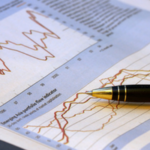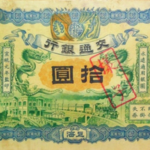Brexit – the impact on your business
| 02-05-2018 | Lionel Pavey |

As the negotiations between the EU and the UK get ever more complicated, there is a strong possibility that rather than a hard or soft Brexit there will be no agreement whatsoever. For businesses that either export to the UK or import from, this could have a fundamental impact on their survival. The Netherlands exports goods and services to the UK with a value in excess of EUR 40 billion per year; more than 200,000 jobs are directly linked with trade to the UK; Dutch capital investment in the UK is more than EUR 180 billion. We take a look at some of the key areas where business could be affected from the viewpoint of cashflows.
Foreign Exchange
It is not known how many Dutch companies actively employ a hedging policy. If GBP was to significantly get weaker, demand in the UK might fall or lead to more contracts having to be settled in GBP. However, at the same time, Dutch companies relying on components from the UK could see their suppliers having their profit margins squeezed – potentially leading to problems in maintaining and fulfilling existing contractual obligations. The biggest concern would involve increased currency volatility. If EUR/GBP does become more volatile, this could lead to clients in the UK shopping further afield to obtain the goods and services they require – leading to a drop in exports for the Netherlands. What are the alternatives available – banking in the UK; offsetting existing supply chains by changing components with UK firms etc?
Funding
At present, the UK receives EU funding and this can be the basis for investment decisions regardless of the location of the business. As this will stop when they leave, there will be an impact on companies that have a multiple presence in both countries. Changes in regulations will bring extra complexity, restrictions and possibly affect the profitability of existing business arrangements. The immediate loss of passporting rights for financial services should not be underestimated.
Supply Chain
All existing supply chains operate under the premise of the single market, with no internal quotas or tariffs. The initial affect will be seen by the imposition of trade barriers, caused by a new trade agreement. This does not just extend to trade tariffs, but also to the implementation of VAT (BTW) on B2B transactions. The dairy industry is one that could be hit especially hard. EU tariffs for non-EU countries are as high as 45 per cent on some dairy products.
Non trade barriers are also a threat – different technical standards, labelling, compliance, together with extended delays in the shipment process (as goods will need to be inspected) will add to both the cost and time of trade.
KYC
All parties will be affected – but do you know what the position is of your clients in the UK? What are their pain thresholds; are they seeking alternatives markets; are they looking for alternative suppliers; how resilient are their logistical chains to change; how will changes in law and regulations affect their operations?
There are a myriad of unanswered questions that need to be addressed – one on one – with every counterparty.
What to do
It is imperative that companies perform a Quick Scan as soon as possible to try and evaluate what their exposure is in the UK and what percentage that makes of all trade for a company. Having ascertained the exposure, it then becomes necessary to stress test the processes and try to model the results on the company by inputting new variables.
With less than 1 year to go, you will need to start very soon!!

Cash Management and Treasury Specialist

 Since the beginning of February there has seen large declines in all the major stock markets – Dow Jones down 9%, AEX down 7%, DAX down 7%, FTSE down 5%. The major reason given is that the market has been disturbed by the thought that interest rates in the US will rise more quickly than previously expected as prospects of inflation come to the fore. Going counter to this thought is the explanation that stock markets achieved good growth in 2017 – all major markets were up with some growing by 15% – and that this is a bout of profit taking, before participants will buy on the dip.
Since the beginning of February there has seen large declines in all the major stock markets – Dow Jones down 9%, AEX down 7%, DAX down 7%, FTSE down 5%. The major reason given is that the market has been disturbed by the thought that interest rates in the US will rise more quickly than previously expected as prospects of inflation come to the fore. Going counter to this thought is the explanation that stock markets achieved good growth in 2017 – all major markets were up with some growing by 15% – and that this is a bout of profit taking, before participants will buy on the dip. At the moment headline inflation is remaining stable, but it appears that the market is expecting inflation to move higher in 2018. The increase in the yield of US 10 year Treasury rates has been more rapid than expected – at the moment the yield is almost 2.90%. It would appear that the increase in US rates is pulling other currency yields higher. Furthermore rises in US interest rates will have an impact on FX hedging policies for companies.
At the moment headline inflation is remaining stable, but it appears that the market is expecting inflation to move higher in 2018. The increase in the yield of US 10 year Treasury rates has been more rapid than expected – at the moment the yield is almost 2.90%. It would appear that the increase in US rates is pulling other currency yields higher. Furthermore rises in US interest rates will have an impact on FX hedging policies for companies.


 Currency volatility is a well-known uncertain component of international business. In the pre-euro era one could suffer severely by currency movements of its European neighbours. Corporations, dealing within euro countries, have diminished the currency exposure.
Currency volatility is a well-known uncertain component of international business. In the pre-euro era one could suffer severely by currency movements of its European neighbours. Corporations, dealing within euro countries, have diminished the currency exposure.

